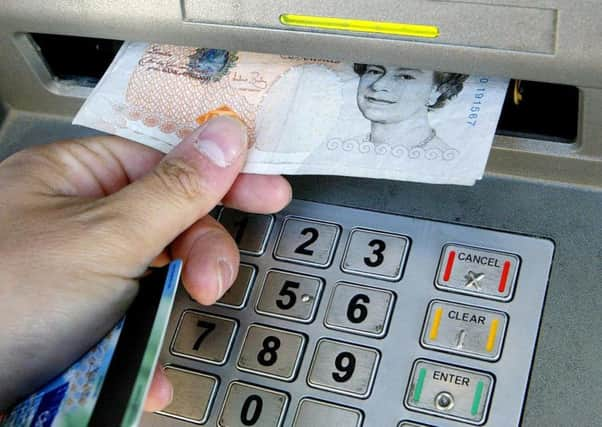Big banks want you to switch current accounts


The UK’s high street banks are ramping up their current account switching incentives as the market braces for the publication of a report that could hasten the end of so-called “free banking”.
Banks and building societies have turned to cashback offers and eye-catching savings rates in a bid to tempt people into changing accounts, two years after the launch of a seven-day switching service.
Advertisement
Hide AdAdvertisement
Hide AdThe Halifax this week increased its “golden hello” for new customers switching to its current accounts from £100 to £125 (although Bank of Scotland, also in the Lloyds Banking Group stable, doesn’t offer an incentive and its customers don’t qualify for the Halifax cash deal).
The Clydesdale is paying £150 cashback to people joining through the current account switching service, provided they shift at least two direct debits and pay £1,000 into the new account within 31 days of transferring. First Direct pays £125 cashback to those who pay in £1,000 within three months of switching, while the Co-operative is offering £100 for switching and £25 to a charity of the new customer’s choice. HSBC also provides £100 cashback, but on the condition that at least £1,750 is deposited within the first two months.
Royal Bank of Scotland, named the UK’s worst current account provider in a recent uSwitch survey, doesn’t offer joining incentives. Nor does Santander, but the Spanish-owned bank does pay 3 per cent on balances up to £20,000 and offers cashback on household bills.
Santander and Halifax were by some distance the biggest net gainers last year when it came to attracting new current account customers.
“This suggests people are looking for rewards and/or interest in return for their custom,” said Andrew Hagger, personal finance expert at Moneycomms.co.uk. “The fact that Santander pays 3 per cent on balances is undoubtedly a big pull in an environment where savings rates are offering such paltry returns. With Halifax it’s probably down to a combination of the switching incentive and the £5 monthly reward programme.”
But rewards for switching can be of dubious value, said Hagger. The risk for bank customers lured by freebies into switching account is that they end up in one that isn’t right for them. In some cases, particularly for those who are frequently overdrawn, the savings can quickly be offset by steep charges if they pick the wrong account.
“Some people will sign up for an account purely due to the headline grabbing incentives, yet if they’d read the details of the account they would find that it’s not suitable for they way they manage their finances,” said Hagger.
Transfer levels remain relatively low, despite the various incentives and the September 2013 introduction of a seven-day switching rule. This gave account switchers a guarantee that all regular payments would be transferred across within seven days and that they’d be covered for any losses arising from problems during the process.
Advertisement
Hide AdAdvertisement
Hide Ad“If customers remain lethargic then the banks will continue to get away with offering poor value products and continue profiting at the customer’s expense,” said Hagger.
Switching might be higher if it were easier to understand the value of a current account, judging by a recent Tesco Bank/TNS research. It found that 55 per cent of current account customers find it impossible to work out the value of their account, rising to 62 per cent among people who aren’t considering a switch.
Of the 17 per cent of people who think about changing current account, just 14 per cent actually go on to do it, according to the Competition and Markets Authority (CMA).
It also found that the annual switching rate remains at just 3 per cent, with regular overdraft users the least likely to move, due to the additional complexities involved.
Rachel Springall, finance expert at Moneyfacts.co.uk, said: “Consumers are likely to be familiar with the Switch Service by now, but is it improving attitudes towards current accounts?
“The CMA highlighted that both types of customers – those who look at switching and those who subsequently move – expressed dissatisfaction with their bank, so it’s good that they are no longer putting up with poor service.”
The CMA is currently putting the finishing touches to a competition inquiry into the current account market, with a provisional report expected next month. Its wide-ranging powers mean that the proposals could include the development of a universal overdraft charging structure, portable account numbers or measures forcing banks to sell some of their branches.
“Depending on the CMA’s actions, if it involves significant costs for banks there’s no doubt some of this will end up coming out of customers pockets and could be another step towards the end of free banking,” said Hagger.